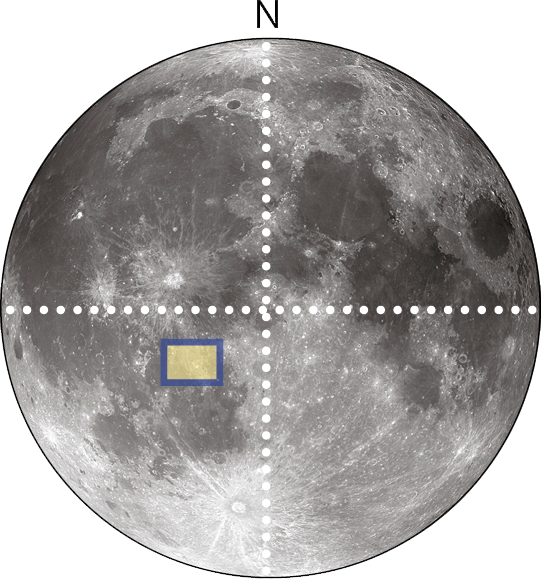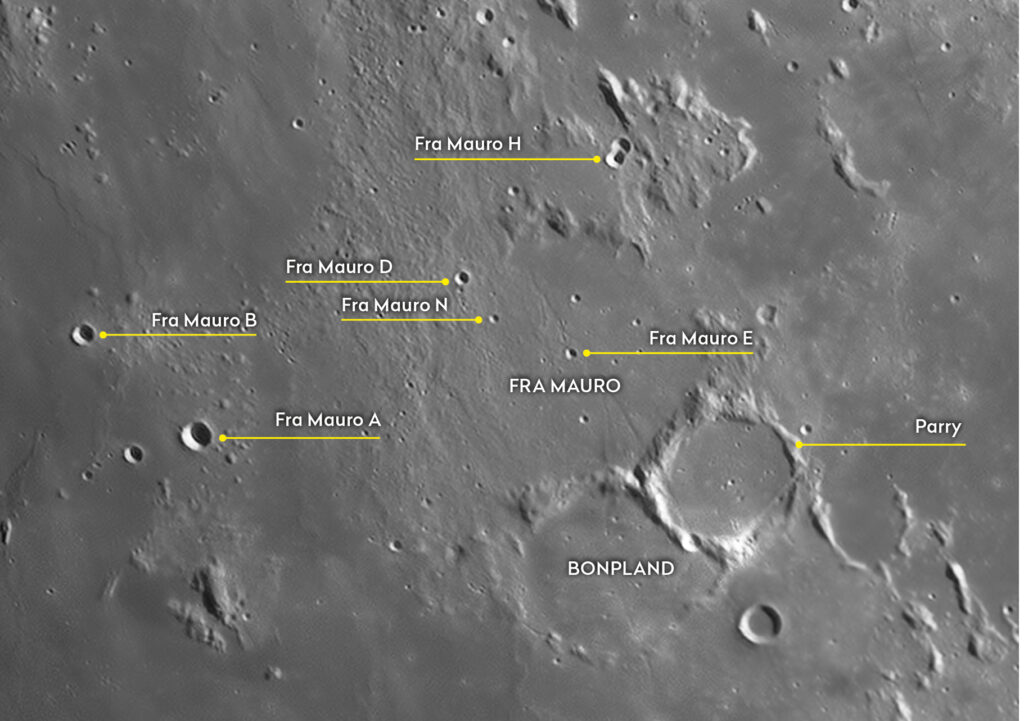February’s top lunar feature to observe

Fra Mauro
Type: Crater
Size: 96km
Longitude/Latitude: 17° W, 6.1° S
Age: Older than 3.9 billion years
Best time to see: One day after first quarter (1 March) or last quarter (13–14 February)
Minimum equipment: 50mm refractor
Fra Mauro is a quintessential example of a walled plain. Measuring 96km in diameter and 800m in depth, its ancient form can be located east of 300km Mare Cognitum, ‘the sea that has become known’. It is not the clearest of lunar craters, its ringed plain defined by a gently raised rim to the west, appearing broken in form to the east. It forms a characteristic trio with 60km Bonpland and 48km Parry to the south. This pair are ancient too, but presumably younger than Fra Mauro as their rims appear to bulge into Fra Mauro’s boundary, inverting the curve of the walled plain’s rim. This suggests they were formed after Fra Mauro and overlay its edge.
“Fra Mauro crater is a quintessential example of a walled plain”
Fra Mauro’s rim is rough and elevated to the southeast where it joins onto the rim of Parry. The co-joined interlopers then take the reins, their northern rims giving form to Fra Mauro’s southern edge. As mentioned, the western rim section of Fra Mauro is gentle, more a subtle ridge formed from an expanse of gently rising and falling highland material. As it heads north, Fra Mauro’s rim appears to elongate northward, almost as if there is yet another ancient form extending the walled plain in this direction. Inside the rim border lies 5km Fra Mauro D.

Large-aperture high-resolution imaging setups may like to try an interesting challenge here. A line of craterlets of ever-decreasing size gently curve south and southeast towards 3km Fra Mauro N. The four craterlets (north to south) are 1.9km, 1.5km, 1.3km and 1.3km. If you want a really tough challenge, there is another 0.7km craterlet that continues the progression, but this would require an aperture over 350mm and extremely good seeing to record. The region to the northeast is picked out by rough, elevated terrain. A pair of similar-sized craters sit in the middle of the region, the southernmost one labelled as 6km Fra Mauro H.
Internally, Fra Mauro’s floor is relatively flat with no indication of a central mountain complex. The half to the west appears rougher than that to the east. A number of craterlets pockmark the region, the largest being in the centre of the walled plain; 4km Fra Mauro E. A north–south rille runs down the centre of Fra Mauro, best seen when the terminator is nearby and the Sun’s light oblique. The rille appears as a graben, a region of the surface which has dropped between two fault lines. It splits in two just to the south of Fra Mauro E, one portion running close to the western rim of Parry, the other entering Bonpland where it becomes even more complex, heading west and south. The craters Fra Mauro A and B, located further to the west are banded, exhibiting dark radial bands on their inner rim walls.
Fra Mauro is a famous feature on the Moon’s surface. Named after a Venetian cartographer, it was the intended landing site for Apollo 13, the mission which had to be aborted when an onboard oxygen tank exploded.